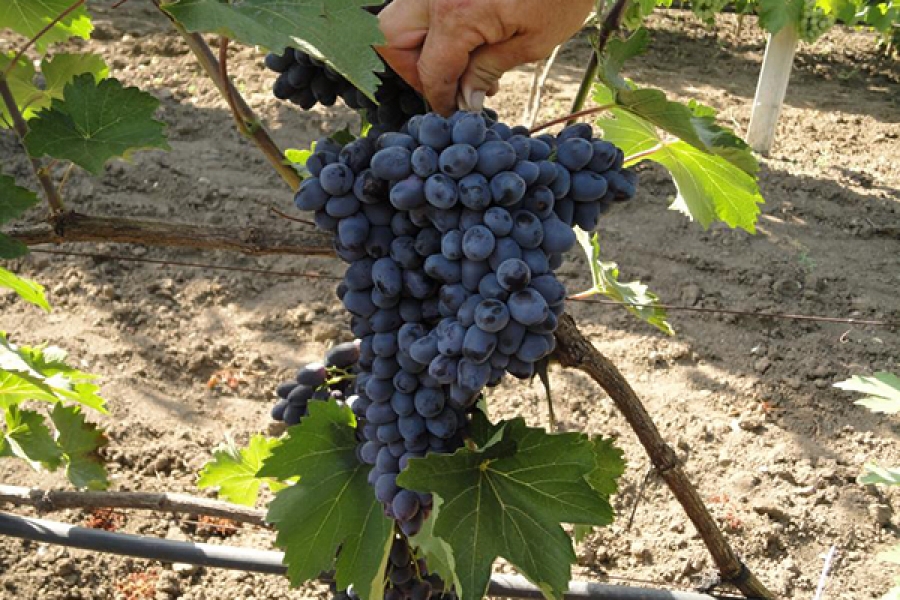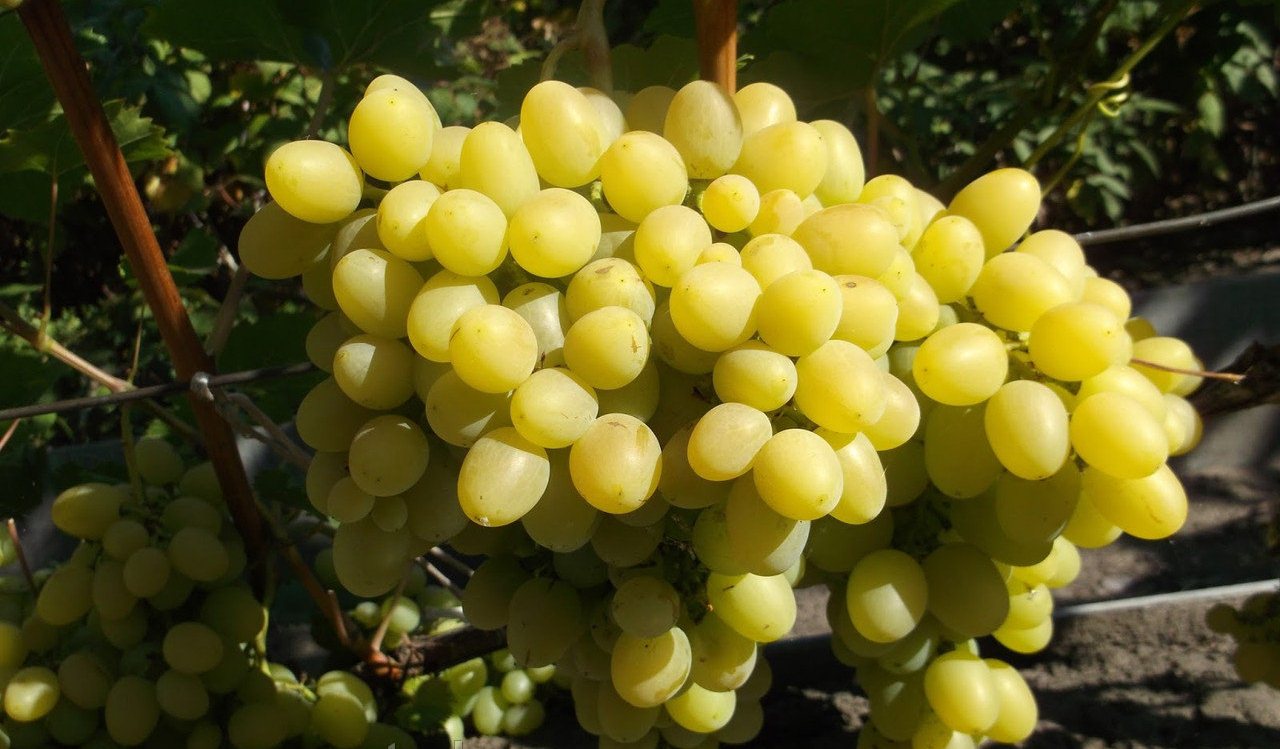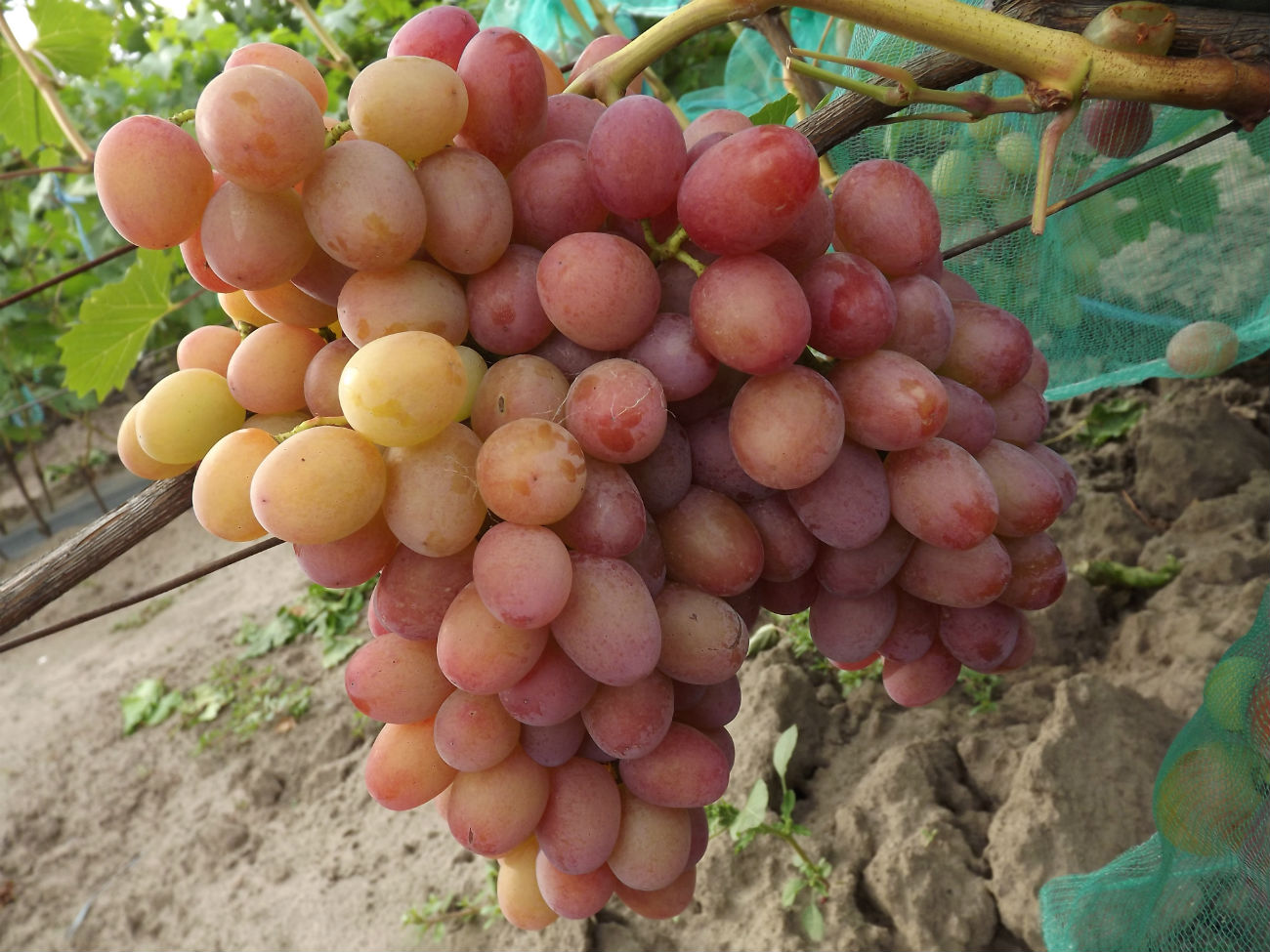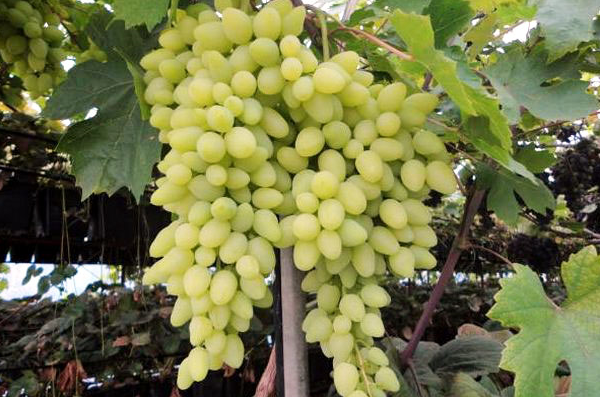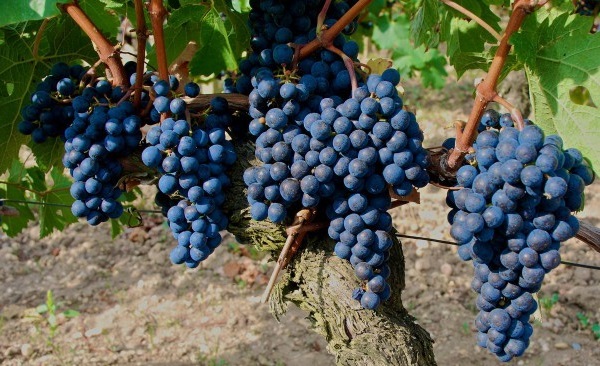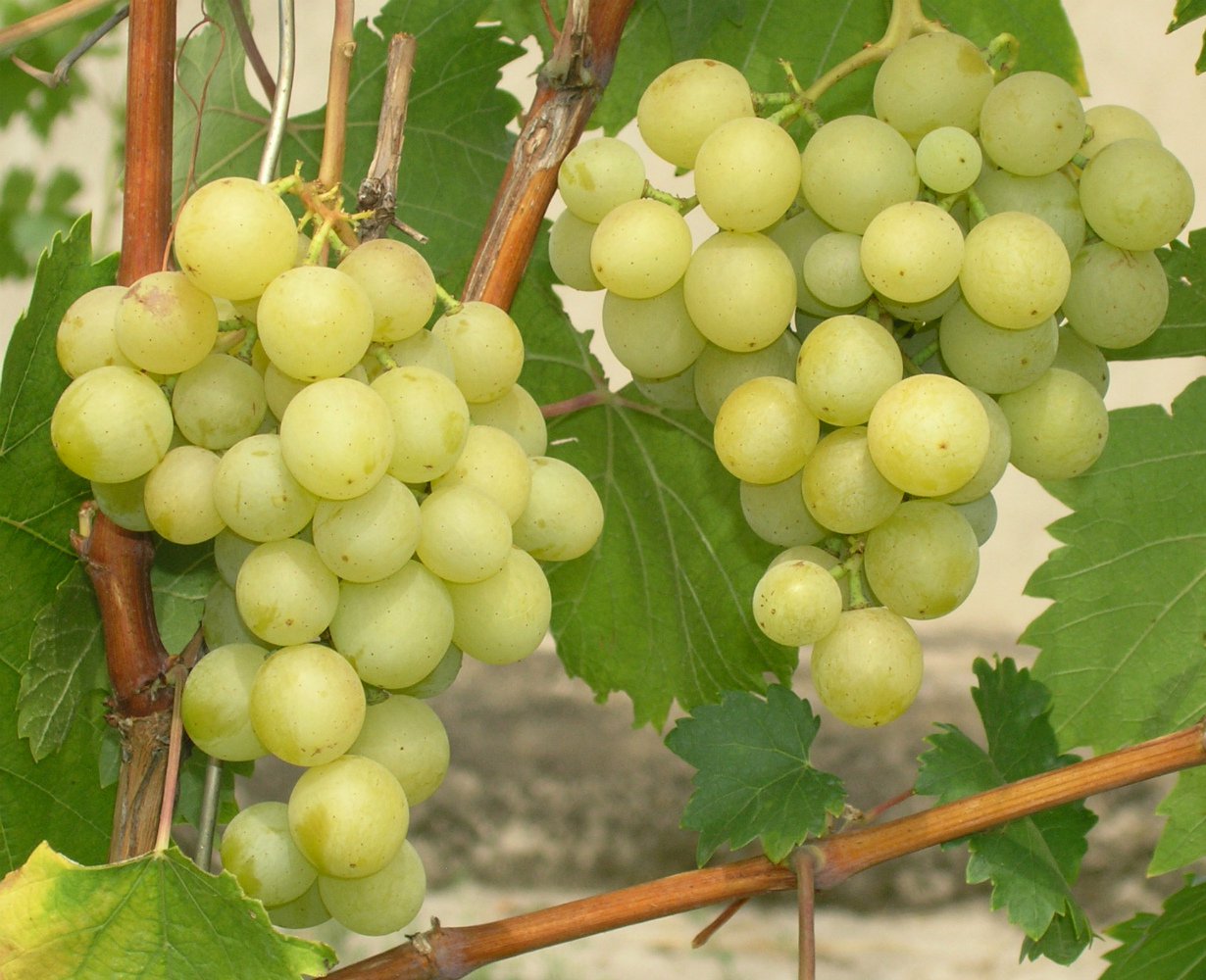Content:
Charlie grape can be called a leader among other grape varieties. Not capricious, not afraid of the cold, including excessively frosty winters, gives a good harvest in any kind of soil. The variety is an excellent option for gardens and household plots, for example, in the Moscow region. With proper care, grapes will delight with a large number of berries.
The species is the result of amateur selection under the guidance of E.G. Pavlovsky. To create it, such types as Victoria and Nadezhda AZOS were used. The grapes were bred in the middle of the 20th century, and included in the state register of Russia in 2015 after long testing. The grape was named Anthracite.
Charlie grapes: variety description and characteristics
- Productivity. Charlie grapes are classified as hybrid. The harvest can be obtained in 115 days in the first half of August. Thanks to this, it is recommended to grow the species in regions with short summers.
The plant will bear fruit even alone, since it does not need pollinators.
- Frost resistance. Despite the fact that the species is resistant to severe frosts, it needs special shelter for the winter. Vinograd will not suffer during spring frosts, but the berries must be protected from rain. Both a beginner and an experienced grower can grow a crop, since there is no need for specialized protection and chemicals. The plant can withstand frost down to -25 ° C.
- Plant parameters. The bush forms vigorous vines, characterized by maturation along the entire length. The bunches are cone-shaped, large. The berries are covered with a thin skin, which is hardly noticeable while eating. The weight of the bunches can vary from 600 to 800 g. The weight of one grape reaches 7-10 g. The shape of the berries is oval, the flesh is dense, the sugar content reaches 19-22%, the acidity is 7-4 g / l.
- Pruning. After pruning, the vineyard quickly recovers, the same applies to frost or hail damage. In addition, the plant feels great during transport.
If the grapes are not ripe, the berries can taste like nightshade, which many do not like. When the bunches hang on the vines for several weeks and pick up sugar, the taste will disappear.
Stages of correct cultivation
Care and planting have an impact on how the plant will behave further: will it bear fruit or not. The best time for planting bushes is the second half of autumn - late October or early November.
The landing site should be sunny, but protected from the winds. You can plant the plant on a slope, but it should be on the south or southwest side. For a large harvest, several simple rules must be followed:
- for planting a culture, black soil or loam should be used, but the plant will take root on sandy, rocky or carbonate soil;
- if you want to plant a new shrub in place of the old one, you need to wait 3 years until the soil is restored.
Landing takes place in several stages:
- A hole is dug up to 1 m deep, drainage is laid out on the bottom: gravel, pebbles, broken brick.A layer of earth dug from a hole is placed on top of it, after mixing with fertilizers. In the resulting hole, you need to pour from 10 to 15 liters of water. After the hole is the same level with the ground, you need to form a mound.
- A future grape bush is planted on the slope of a hillock, so that later it would be convenient to cover it for the winter.
There is another agronomic technique that can increase yields. It is based on the principle of cross-pollination. You need several different grape bushes at close distance (3 m) from each other. Ripening dates should not vary greatly.
Plant care principles
- Watering. Water the grapes once a week. Water consumption: 2 buckets per bush (adult). The water should not be cold. The jet is directed under the bush, and not on the part of the plant located near the ground. During flowering, watering is stopped.
- Leaving during cold weather. This variety of grapes must be covered for winter. It is better to start preparation in the middle of autumn. The fruiting part of the shrub is bent to the ground and secured with wooden horns or homemade wire clips. Further, everything is covered with earth by 20 cm. In winter, the grapes must be monitored in order to avoid the greenhouse effect. If the winter is warm, it is better to open the vines.
- Fertilizers. The ground part of the plant is sprayed with copper sulfate. It will not hurt to decompose the rat poison, since the vine for rodents is a sweet treat. Grapes in a short time draws out all the nutrients from the soil, so it needs constant feeding. For fertilizers, grooves are made up to 35 cm deep.The distance from the groove to the base of the shrub should be 50 cm.
Advantages and disadvantages of Charlie grapes
Viticulture is not an easy task, requiring knowledge about each species, its pros and cons. Charlie grapes have the following benefits:
- excellent productivity;
- disease resistance;
- the species does not have peas (the appearance of small berries);
- frost and frost resistance. Shrubs are able not to die at temperatures down to -24 °;
- the species is grown not only on personal plots, but also on large plantations for sale. In addition, grapes are stored for a long time, the berries do not crack and do not rot;
- each bunch has a presentation, the berries are of the same size and sweet in taste.
Not to do without disadvantages:
- despite resistance to frost, grapes need winter shelter;
- yields rationing will be required, since almost 100% of the shoots are fruitful.
Charlie varietal grapes have excellent characteristics and taste. It is easy to care for him both in summer and winter. And you can also earn decent money on it due to the presentation of the bunches. No wonder he is called the leader among grape varieties.
